 |
|
|
|
|
 |
 |
 |
 |
13th [Tues.] 16:15 - 18:15 / Tokyo International Forum, Hall B7-2
Director : ODA Mayusa [Hôgaku Journal, Editor] |
 |
| The term 'Hôgaku New Wave' was used throughout the 1990s to describe the adaptation of Hôgaku instruments not only to jazz and classical but to include rock and pop music as well. The younger generation has begun to cross disciplines and genre boundaries and to create unique music and now has begun to spread outside of Japan as well. From the perspective of one of the leading musicians of that era, the possibilities of this musical style depend on the power of the next generation waiting to be heard.
|
|
 |
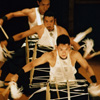 |
 |
Eitetsu-Fuun-no-kai
[UEDA Shuichiro, KOIZUMI Kenichi, Hase Mikita, TASHIRO Makoto]
In 1995, a group of drummers who appreciated Hayashi Eitetsu's music came from all over Japan to play together. Since then while not fixed, often numbering ten or more people, the group's membership has been decided by Hayashi depending on the concert. This summer the ensemble celebrated the 10 year anniversary and started to give a concert on their own. Its long-held motto, 'Heroes seize the moment to accomplish their aim' has arrived. The group's fine sound constructs an atmosphere filled with acute tension.
|
|
 |
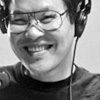 |
 |
KURIBAYASHI Hideaki
Compared to the ancient koto, the 17 string koto is considered relatively unexplored. Kuribayashi is a "sound artisan" currently exploring the possibilities of this instrument. Producing continuous sound by rubbing the 17 strings with a stick wound in koto strings, his repertoire ranges from avant-garde aspirations to romantic melodies of his own composition. He plays with musicians from around the world, and has been recognized by leaders of earlier generation. He has several CDs available.
|
|
 |
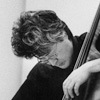 |
 |
SAITO Tetsu
Performer and composer of contra-bass, he is a keen collaborator in dance, theatre, art, film, calligraphy, hogaku, gagaku, nohgaku, western classical, tango, jazz, European improvisation, Korean culture and Asian shamanism. He works as a selector for dance auditions, and conducts workshops. From 2000 he has become a casual lecturer at Sophia University. He has produced CDs in Canada, US, France and Korea.
|
|
 |
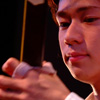 |
 |
NITTA Masahiro
Born in 1984, he won the National Competition in Kanagi for two successive years, followed by the Tokyo Competition. Outside of working with his father in the unit 'Nitta Oyako', and the taiko, bass and saxophone unit 'The Esoragoto Band', he plays the natural feel of various folk music sessions, performs in Asian Performing Arts festivals and in overseas markets as well. This time he will perform again with US guitarist Dean Magraw.
|
|
 |
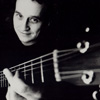 |
 |
Dean MAGRAW
Acoustic guitarist and song-writer, his independent and soulful music spans country blues, jazz, classic, Indian music, folk and traditional musical styles, from relaxing melodies to passionate works. His solo album 'Broken Silence' won the '3Indie2prize' by the Association of Independent Record labels (US).
|
|
 |
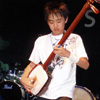 |
 |
ASANO Sho
Born in 1990, from as early as he can remember he has been singing folk songs and sitting in the shamisen playing posture. From the age of 3 he learned taiko drum, from 5 he began the shamisen, and made his debut at the Aomori prefecture national shamisen competition, the shamisen players' key to success, at the age of 8, winning the under 15 category. In 2004, he was the youngest ever to win the A level competition, which he held for 2 years running.
|
|
 |
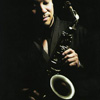 |
 |
KOH Mr. Saxman
CANCELLED
|
|
 |
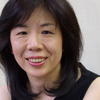 |
 |
• Director : ODA Mayusa


In 1990 she joined the Hôgaku Journal Co., and became the present managing editor of the magazine 'Bachi2' for the taiko drum and shamisen. She plans and produces concerts and coordinates workshops and from 2001, the annual 'Sounds of Japan Festival' (sponsored by JASRAC), is the first event of its kind to provide not only live and recorded events, but also Japanese instruments which can be played and a display of how the instruments are made.
|
|
|
|
|
|
|
|
|
 |
